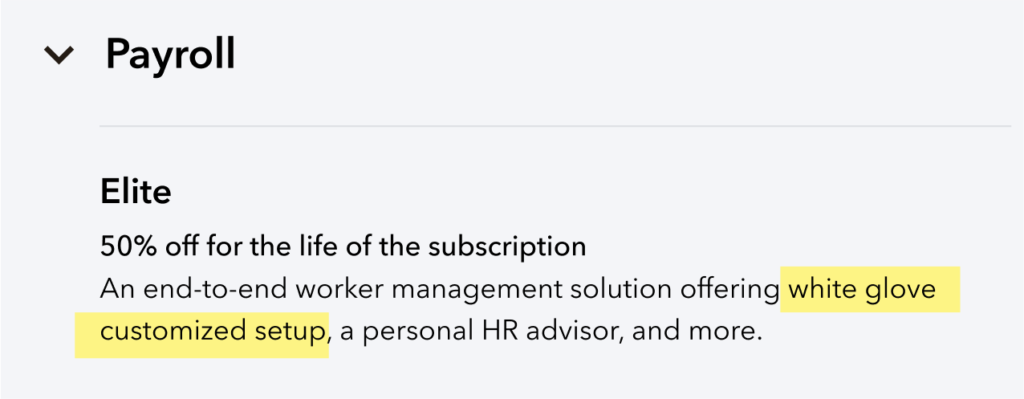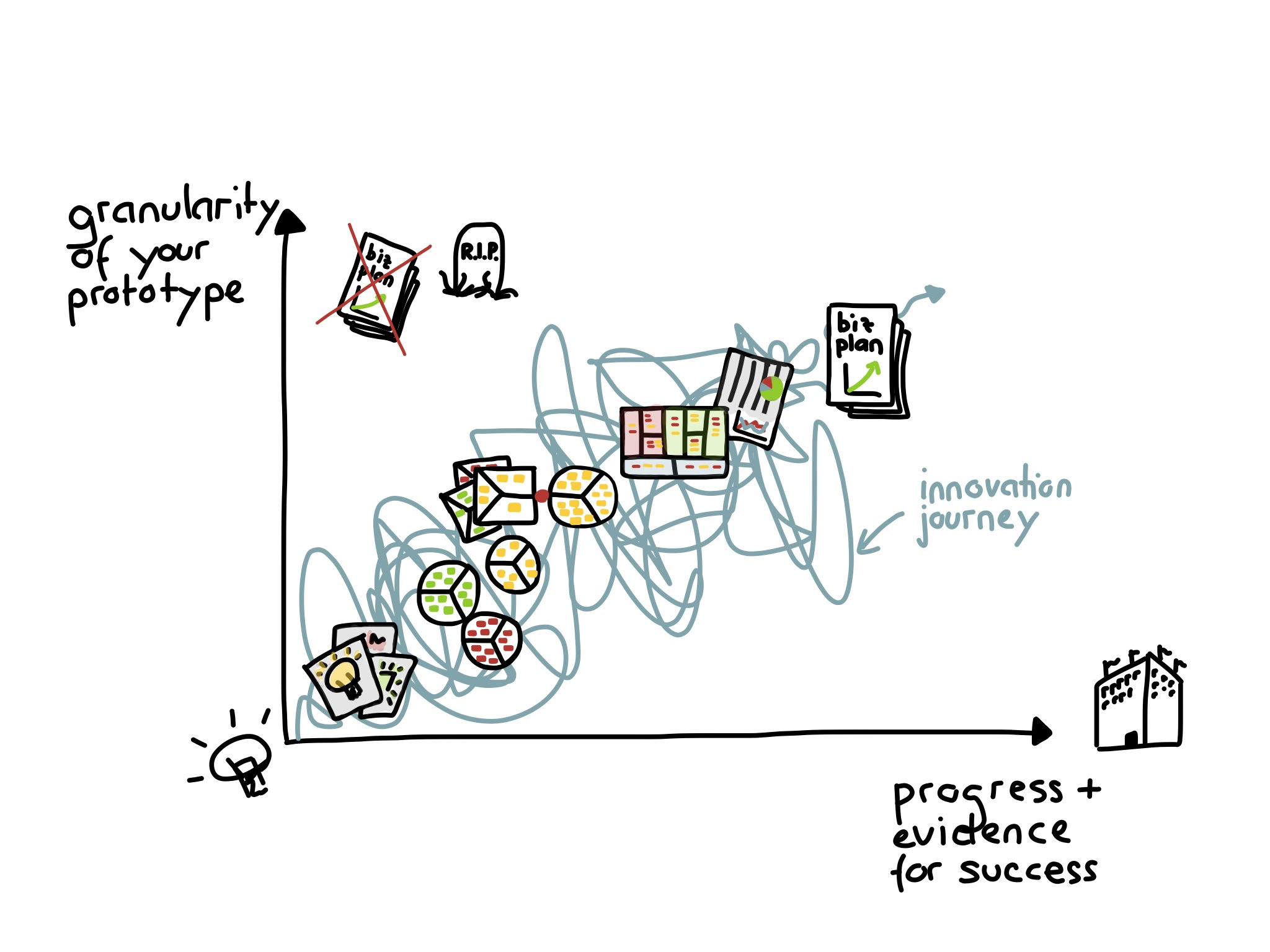My first few days at Intuit in 2021 were exciting, filled with introductions and onboarding activities. But by the end of that week I longed to “start contributing.” I was ready to get to work.
I mentioned this to my design partner, Nicole Smith. She pointed me to a problem that she probably thought would be a quick fix — there were instances of non-inclusive language in our QuickBooks Online Accountant (QBOA) product. Could I replace those with neutral or respectful language instead?
“Sure!” I said — and that’s how I found myself drifting down a rabbit hole, petticoats umbrella-ing my fall.
Term 1: “white glove”
In a subscription listing for QBOA, we offered our customers an Elite subscription which included “white glove customized setup.”

But on our content design site, we call out “white glove” as a term that has racist origins:

The search begins
My “newness” at Intuit actually helped. I didn’t know where to start, so I asked my Intuit buddy, Sarah Mohs, for help. Sarah pointed me to Nicole Baptista in marketing, who had worked on removing “white glove” from the company’s website. She also linked me to a Slack channel for folks interested in this issue. (Week Two and already I got to pester people outside my immediate team — woot!)
Nicole supplied me with her research and documentation on the web project (while confirming my realization that Intuit only hires nice people). On Slack, I searched for the owners of the underlying code in QBOA that contained this content. Then I got ambitious and looked for the owners of the code in other Intuit products.
Then began the chain of talking to a lot of folks who suggested other people to talk to who pointed me to still others. It was clear that, even though Intuit is a unified company, there’s no single group of people who manages this element of the code. Rather, each business unit and product is responsible for their own little patch of algorithmic real estate.
I reined in my scope. On this first project, I would just get it fixed in QBOA. I circled back to our product manager, In Yun, and we figured out a path forward to replacing “white glove” in the QBOA product.
From “white glove” to “expert”
Why did we choose “expert setup”? Nicole’s research found that not only did “white glove” invoke ties to minstrel shows and colonialism, it was being misunderstood by more than half of our users. Nicole researched what our competitors called similar services, looked at content within our products that described the customized setup, and identified alternatives. After testing with users, “expert setup” emerged as the phase that best conveyed the service’s value.
Problem solved, right?
The phrase “expert setup” solved the non-inclusive language problem, but it created a new content design problem: “expert setup” was already being used in the phrase “expert setup review.”
In the Premium subscription option right below the Elite level, the text called out “expert setup review” as an additional service over the Core (or basic) level. This was definitely going to cause confusion.
Fortunately, the solution was straight-forward. We changed the phrase to “expert review,” giving it a separation from “expert setup.”

Term 2: “master admin”
While working on the “white glove” issue, we discovered another phrase with racist overtones: “master admin.”

Again, we looked to the content design site for guidance about “master”:
“Don’t use. In some contexts, ‘master’ connotes a hierarchical relationship of control and ownership. In any form, it’s connected to the idea of dominance and … a history of oppression.”
The site gave simple suggestions for replacing it:

In Yun wrote Jira tickets and drafted two software engineers, Saishree Jayakumar and Abhishek Yadav, to the project. Once we rolled up our sleeves and got to work, the changes for both of these terms were completed quickly.
Takeaways
For a new hire, this first project taught me a lot about the way Intuit works.
1. Intuit means what it says
Last summer, Intuit CEO Sasan Goodarzi issued a call to action, saying we would not be silent about racism. This wasn’t a passing comment in a media piece, quickly forgotten. He identified it as a priority initiative: diversity in our workforce, equitable treatment across all demographics, inclusion by design. The charge made it clear that all of us needed to participate in this initiative, own it, and drive it forward.
2. We are they
No one asked why I (a white, cisgender, able-bodied person) was lobbying for inclusive language. This attitude is itself inclusive, acknowledging that, in a heterogeneous society, we don’t necessarily know how DEI (diversity, equity, and inclusion) issues affect any one of us. Using myself as an example, I’m a woman working in technology (and before that, film and TV). Equity and inclusion have been huge themes throughout my career. Also, my family includes members who are black, Latinx, Asian, gay, and trans, so people I love require an environment of increased diversity and inclusion. Finally, I have a minor hearing disability that I mostly keep hidden so that it doesn’t affect people’s perception of me.
3. We need to be the change we want to see
While everyone I talked to supported this work, I occasionally ran into: “Sure, this needs to get done, but isn’t someone already taking care of it?” Sometimes I’d get referred back to Sarah and Jen, her manager. So, yes, they are coordinating efforts throughout the company — but neither Sarah nor Jen writes code. Whether it’s language on our website or within our products, at some point there needs to be a Jira ticket placed in a sprint and assigned to a developer. That’s how we’ll successfully remove racist language we have identified, and create both a workplace and products that acknowledge — and celebrate — the vast, diverse, amazingly eclectic world we live in.
Be the change
Inclusive language is not somebody else’s project, it’s our project. Every business unit at Intuit with user-facing content is responsible for removing racist language in their own section of the code. It’s not hard. It doesn’t take a lot of time. We just need to prioritize it, so that our actions match our intentions, and our company continues to move forward toward more diversity, more equity, and more inclusion, for all of us.












